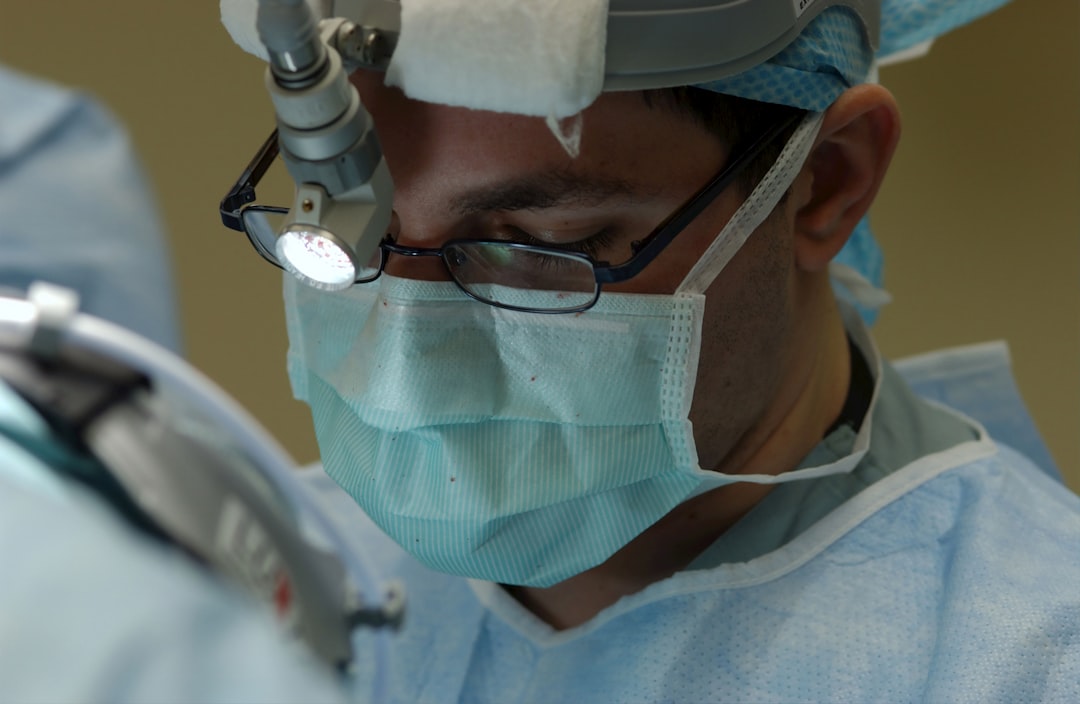What is it about?
This review paper describes how the authors utilized the Ocular Pressure Estimator {OPE}, (a device that was validated and described in a recent tandem paper in the same journal) to estimate the intraocular pressure (IOP) while the eyelid is closed, and an external force is applied to the closed eyelid. Primary data are presented that indicate that the IOP becomes significantly elevated during sleep postures that place a dependent eye against an object that applies force to the closed eyelids. Clinical data are then presented that correlate a patient's reported preferred sleep posture preference with asymmetry in the vertical cup-to-disc ratio of their optic nerves. The hypothesis is that long term chronic preferences for placing one eye in a dependent position during sleep over years of time would create asymmetric damage to the optic nerve, from the induced IOP elevations that occur during the external ocular compressions that occur during sleep in the dependent eye. The OPE was also used to estimate the IOP during the digital ocular massage maneuver used by glaucoma surgeons after trabeculectomy. The induced IOP was first characterized with the OPE, and it was then used to "teach" glaucoma surgeons how to reproduce a specific targeted IOP. The paper ends with a review of various conditions and clinical situations that are associated with external ocular compression, in order to call attention to this important phenomenon, and its far reaching clinical implications.
Featured Image
Why is it important?
This paper demonstrates that the intraocular pressure (IOP), which is normally between around 10-20 mmHg can be induced to rise to levels that are between 2-5 times higher than the "normal" range during external ocular compression. Since it is said that every 1 mmHg of IOP lowering is clinically significant, elevations of IOP in this range are clearly clinically important. The levels of IOP estimated to occur during external ocular compression approach some people's blood pressure, which has been found to "dip" into a lower range at night, and to an even greater degree if you have glaucoma. Patients who take high blood pressure pills at night, (which is a very common practice), run an even higher risk of deep blood pressure "dipping" during sleep. If the IOP is greater than the blood pressure, then no oxygenated blood will enter the eye. It is more likely that the transient and intermittent induced elevations of IOP simply disrupt healthy blood flow in a chronic way, and this is a likely risk factor for the production and progression of glaucoma. The transient elevations of IOP during sleep also likely affect the flow of blood in other ways, like inducing turbulent blood flow in retinal and optic nerve veins. This may contribute to retinal and optic nerve vein occlusions and contribute to the fluid leakage seen in diabetic retinas. The transient elevations of IOP produced during sleep could also be sufficient to disrupt the already disturbed integrity of the various layers of the macula in patients with the dry form of macular degeneration, and promote conversion to the wet form of the disease. It is also hypothesized that external ocular compression could be a contributor to sudden infant death syndrome, since ocular compression is known to cause a profound slowing or stoppage of the heart, that is even more accentuated in premature babies. Most of these clinical scenarios are amenable to further research and confirmation. The good news is that external compression of the eyes during sleep is completely preventable by using a rigid ocular shield, similar to the ones used after cataract surgery, so that external compressions are transmitted to the bones around the eye, and not the eye itself.
Perspectives
This paper, and the tandem paper published by the same authors in a recent Clinical Ophthalmology issue, are designed to stimulate a new way of thinking about humans and the impact of their environment on their health. Because measuring the intraocular pressure (IOP) has been mostly impossible while the eyelid is closed (with the exception of a contact lens device that can provide useful information in these clinical situations), the IOP induced during external ocular compression has been largely ignored by clinicians, until recently. It is clear that there are many instances when every person on Earth will experience external ocular compression, not just during sleep, but during the simple act of rubbing your eyes, for example. The authors hope that the medical community will now be more aware of this clinically important phenomenon, and we hope our work will stimulate additional research in glaucoma, diabetic retinopathy, retinal and optic nerve vascular occlusions, macular degeneration, and sudden infant death syndrome, all of which are likely impacted to some extent by external ocular compression, and all of which are easily treated with inexpensive protective ocular shields.
Dr Michael Stanton Korenfeld
Comprehensive Eye Care, Ltd.
Read the Original
This page is a summary of: Review of external ocular compression: clinical applications of the ocular pressure estimator, Clinical Ophthalmology, February 2016, Dove Medical Press,
DOI: 10.2147/opth.s92957.
You can read the full text:
Contributors
The following have contributed to this page










